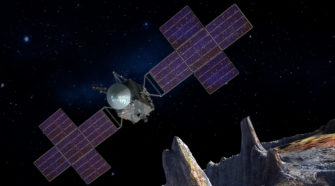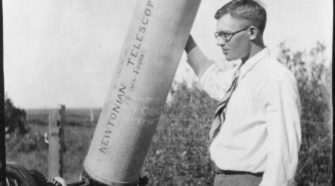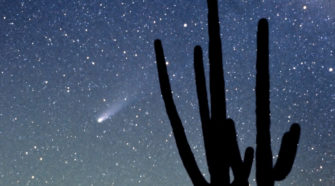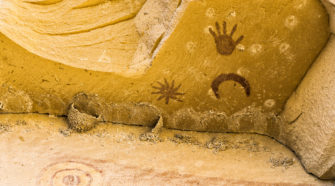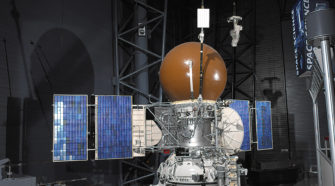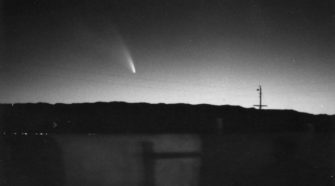Special Topic: Resources in “Small Bodies”
When it comes to their composition and internal structure, there is a wide variety among the asteroids. We know this primarily through two means: the study of the various meteorites that have landed on Earth – the subject of a future “Special Topics” presentation – and examination of their spectrum. Although asteroids do not give …
This Week in History: March 8-14
MARCH 8, 1772: A French amateur astronomer, Jacques Montaigne, discovers a comet that is followed for one month and that reaches 7th magnitude. Over the next 5½ decades the comet is discovered on two subsequent returns, the latter of these being in 1826 by an Austrian army officer, Wilhelm von Biela, for whom it was …
Comet of the Week: 1P/Halley 1981i
Perihelion: 1986 February 9.46, q = 0.587 AU Those of us space-minded people who came of age during the middle decades of the 20th Century learned of Comet Halley and its impending return in 1986, and many of us undoubtedly heard stories of its appearance during its excellent return in 1910; my paternal grandmother, an …
Special Topic: Comet 1P/Halley
To our ancestors of just a few centuries ago, comets were, at best, mysterious objects, very possibly of divine or supernatural origin. When one considers that bright comets could appear anywhere in the nighttime sky, seemingly out of nowhere, and after being visible for a few days or weeks would then disappear, it is little …
This Week in History: March 1-7
MARCH 1, 1705: British astronomer Edmond Halley publishes his calculations of the orbits of the comets of 1531, 1607, and 1682, concluding that they are individual returns of the same comet, and that that comet would return in 1758. His prediction turned out to be correct, and the comet has been named in his honor. …
Comet of the Week: West 1975n
Perihelion: 1976 February 25.22, q = 0.197 AU What I consider to be the best comet I have ever seen was missed by most of the general public. Part of this was due to the fact that it put on its best appearance in the sleepy hours before dawn, but a large part of it …

